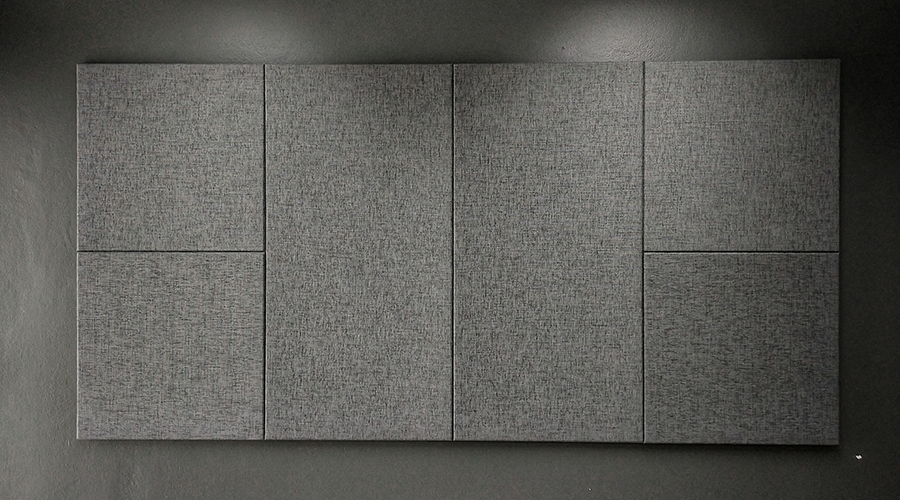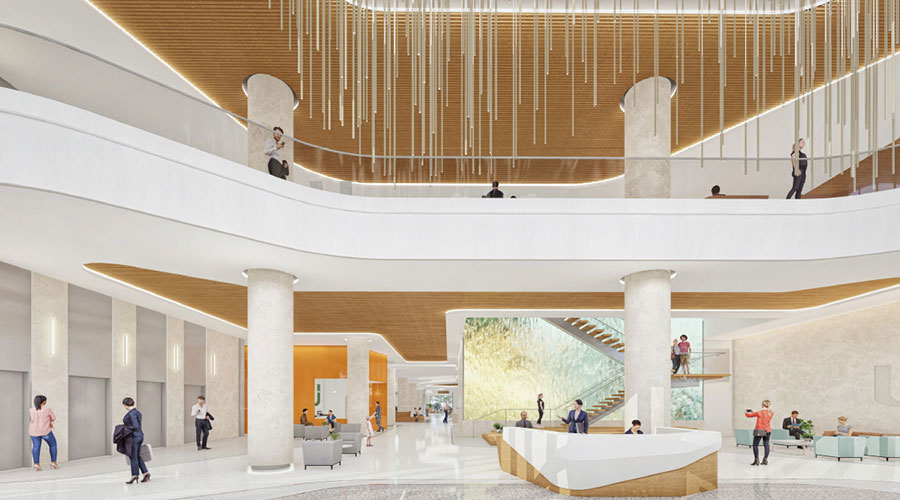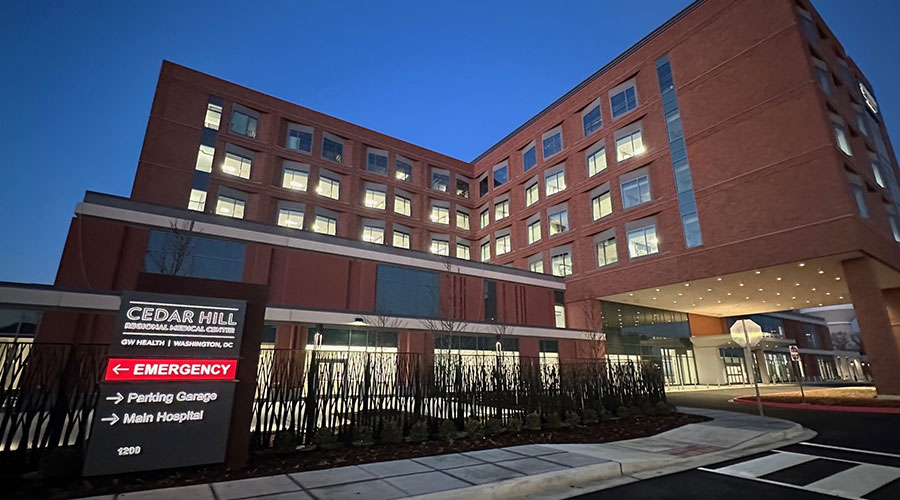Noise levels can influence how a patient feels and heals in a healthcare facility. Proper acoustics are the way to mitigate noise levels and let patients recover in peace. In this manufacturer roundtable, Healthcare Facilities Today speaks with acoustics manufacturers about how proper acoustics improve a patient’s comfort and healing.
How can proper acoustics improve a patient’s comfort and healing?
“Acoustical comfort for any patient is critical for their recovery process and overall wellbeing. It is imperative that an architect carefully considers the best design for the creation of sound isolation and absorption. Operable wall systems are one effective tool that allows for any healthcare space to flex as need while also offering speech privacy for the patient and their family, acoustical comfort throughout the 24-hour demands of a healthcare environment and minimal annoyance from noise-producing sources.
In the absence of strong acoustical controls, noise can interfere with a patient’s daily activities, feelings, thoughts and sleep. Exposure to continuous noise can result in anger, exhaustion and stress-related symptoms. Attempting to recover in a noisy environment that routinely disrupts a patient’s sleep can also result in an impaired mood, increased daytime sleepiness and even impaired cognitive performance. Long-term effects include increased risk of hypertension, heart disease and stroke.”
— Bryan Welch, managing director, Modernfold
“Since the US began tracking perspectives on hospital care through Hospital Consumer Assessment of Healthcare Providers and Systems (HCAHPS) surveys in 2006, patients have continuously identified noise as the least acceptable aspect of their stay. Despite marginal improvement early on, satisfaction with this environmental parameter effectively plateaued at just 62 to 63 percent from 2014 onward. This abysmal record tells us that improving acoustics not only needs to be a primary goal for hospital administrators, but that efforts to do so over the last decade have had little to no impact. New approaches—such as properly implemented sound masking systems, which have been shown to significantly increase HCAHPS scores—need to be more broadly adopted. That said, there is more to this story than improving satisfaction.
A growing body of research shows that noise has non-auditory (i.e., not related to hearing impairment) health effects, such as changes in our hormones, sweat response, metabolism, heart rate and blood pressure, as well as outcomes related to its disruptive effect on sleep and immune response—and, hence, negatively impacts patient recovery. Reducing patients’ ability to perceive surrounding noise lowers stress levels and permits patients to fall asleep more quickly and stay asleep longer—factors critical to their healing process. An acoustically well-designed space also enhances speech privacy, which is both a legal obligation for healthcare organizations and a comfort consideration for patients and their families who disclose sensitive personal healthcare information within these environments.”
— Niklas Moeller, vice president, LogiSon Acoustic Network
“Sound can affect each of us physiologically, psychologically, cognitively and emotionally. In an environment that at times can be stressful, like a healthcare setting, understanding, identifying and correcting acoustic issues is paramount to patient comfort, and the satisfaction and effectiveness of those responsible for patient care.
Hard surfaces like glass or tile flooring can reflect noise, increasing a patient’s breathing, heart rate, and brain activity. When compounded, all these human responses can increase stress and discomfort, cause sleep disruptions and stall the healing process. By incorporating acoustic products into a space, the ratio between hard and soft surfaces is changed. Sound waves are “trapped” in sound-absorbing materials, thereby reducing unwanted reverberation. This is especially beneficial in hospitals and clinics.
In addition to providing acoustic comfort, products manufactured from Polyethylene Terephthalate (PET) felt can help to downplay the clinical look and feel of hard surfaces, instead creating a more relaxing and comforting space. Research has shown that “biophilic [natural or nature-inspired] design elements are shown to reduce stress, increase cognitive performance, improve healing, and positively affect emotion, mood, and preference.” (Browning et al., 2014). Acoustic products comprised of natural materials or manufactured in nature-inspired colors are thereby welcome additions to healthcare settings. While nothing can quite replace natural light, well-distributed, lower-temperature lights in warm and calming acoustic light fixture shapes and colors are another way to improve acoustics and comfort.”
— Michael Ackelbein, vice president of sales, Fräsch
“Our bodies respond physiologically to noise and quietness. We cannot prevent or control it. In noisy conditions, our heart rate, respiration rate, blood pressure and muscle tension increase. When noise ceases and quietness remains, our physiology returns to normalcy over time. Healing occurs during sleep. We can only achieve restorative deep sleep when we are comfortable and at ease. This includes auditory comfort.
The Center for Health Design (CHD) has eight design interventions that any hospital can undertake, and three of them involve acoustics. The first is to install high-performance sound-absorbing ceiling tiles with a Noise Reduction Coefficient rating of NRC 0.90 or higher. Doing so will reduce patient stress and increase patient sleep quality and satisfaction. CHD also recommends playing music as a positive distraction during procedures, and to conduct a noise audit and implement a noise reduction plan.
Patient safety is also a factor, along with comfort and healing. With noise disturbances comes a higher likelihood of patient sleep deprivation. Under these conditions, for example, patients are less likely to abide by their care plans. An elderly patient that is supposed to call for assistance before getting out of bed may decide not to wait, and as a result fall and suffer additional injuries.
The impact of acoustics on patient health and cost of care is so profound that the United States Centers for Medicare and Medicaid Services (CMS) includes a question about acoustics on its Hospital Consumer Assessment of Healthcare Providers & Systems (HCAHPS) inpatient survey. It is called the ‘quiet at night question’ and asks patients, “How quiet was the area around your room at night?”
Low scores on this survey can result in lower financial reimbursement from CMS to the healthcare providers for the care of Medicare and Medicaid patients. It is a proof-of-performance system with financial consequences. Noisy hospitals cost the government and ultimately the taxpayers more money. Under noisy conditions, patient length of stay increases and 30-day readmission rates for recurring or related conditions increase. This means greater cost. Healthcare facilities should therefore implement CHD design recommendations to improve patient sleeping conditions, HCAHPS scores and financial reimbursement from CMS.”
— Gary Madaras, PhD, acoustic specialist, Rockfon
Jeff Wardon, Jr. is the assistant editor for the facilities market.

 Design Plays a Role in the Future of Healthcare
Design Plays a Role in the Future of Healthcare Cedar Hill Regional Medical Center GW Health Officially Opens
Cedar Hill Regional Medical Center GW Health Officially Opens Designing Healthcare Facilities for Pediatric and Geriatric Populations
Designing Healthcare Facilities for Pediatric and Geriatric Populations Kaiser Permanente Announces New Hospital Tower at Sunnyside Medical Center
Kaiser Permanente Announces New Hospital Tower at Sunnyside Medical Center Building Disaster Resilience Through Collaboration
Building Disaster Resilience Through Collaboration